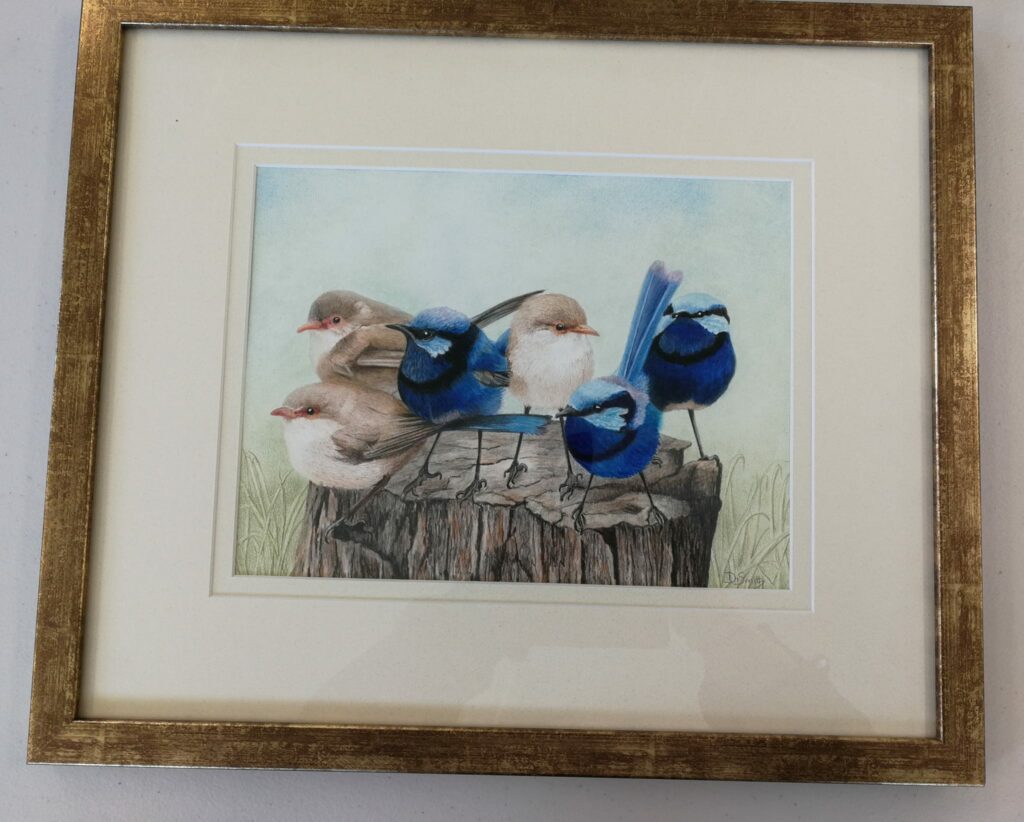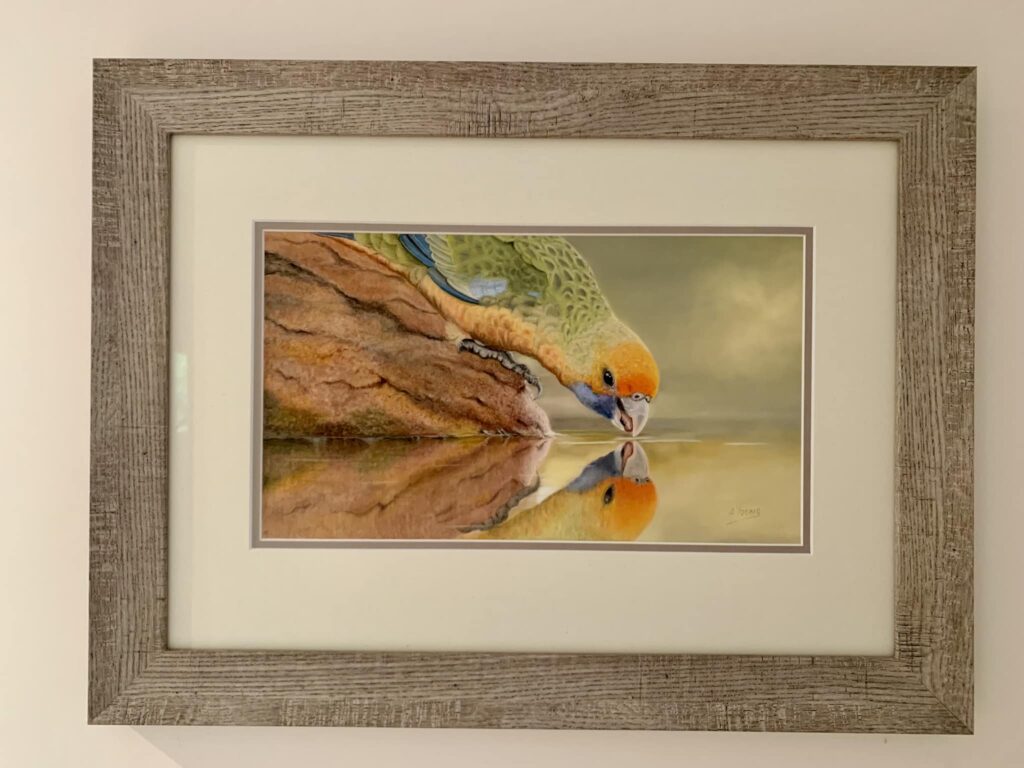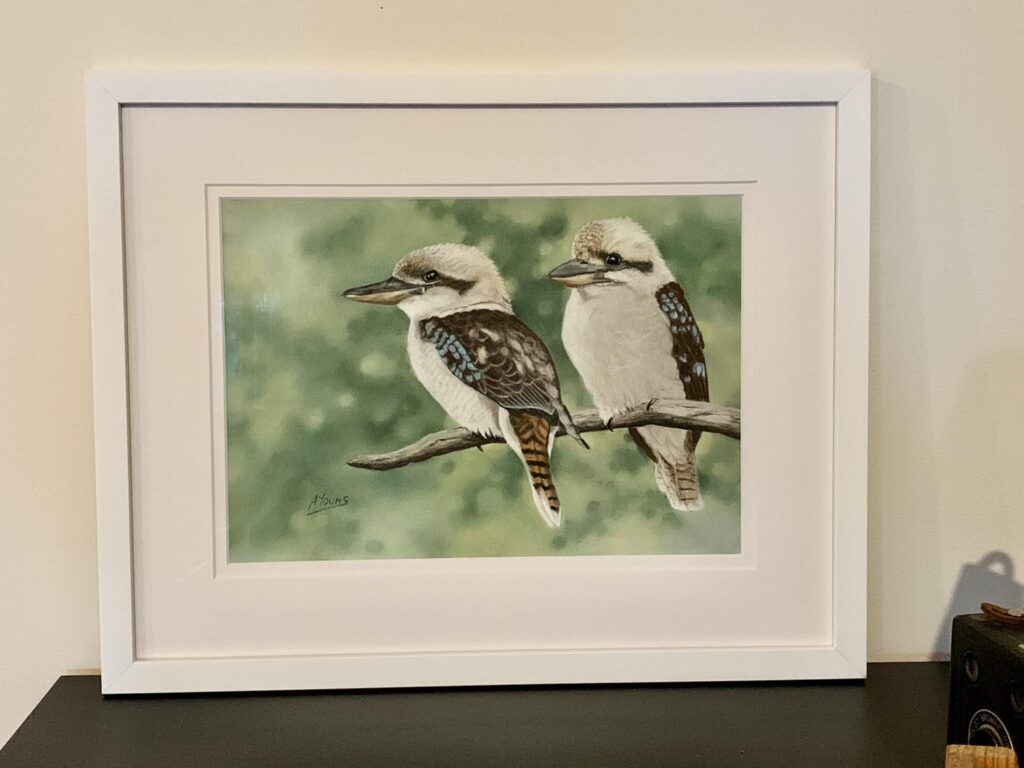Choosing a suitable frame for your wildlife artwork is an important decision that can greatly impact how your artwork is presented and perceived. Here are some steps to help you choose the right frame:
Consider the Style of Your Artwork: Think about the style of your wildlife artwork. Is it realistic, impressionistic, or abstract? The frame should complement and enhance the style of the art.

Match the Frame to the Subject Matter: Wildlife artwork often features natural subjects. Consider frames with earthy or natural tones, such as wood or greenish hues, to harmonise with the subject matter. You can also opt for frames with textures or patterns that evoke a natural feel.
Choose the Right Colour: The frame’s colour should either complement or contrast with the colours in your artwork. Consider selecting a colour that highlights or accentuates the dominant colours in your artwork. Alternatively, a contrasting frame can make the artwork pop.
Assess Frame Thickness: The thickness of the frame can influence the overall appearance of your artwork. Thicker frames can provide a sense of importance and grandeur, while thinner frames may give a more delicate and minimalist look.

Matting: Matting can enhance your artwork and create separation between the art and the frame. Use a mat if you want to add more space around the artwork or if it’s a common practice in your art niche. Choose the mat colour and size that complements your artwork.
Conservation and UV Protection: If you want to preserve your wildlife artwork for a long time, consider using conservation-grade or UV-protective glass or acrylic in your frame to protect it from fading and damage.
Frame Profile: The profile of the frame, including its shape and design, can affect the overall presentation. Select a frame profile that complements the style and subject of your artwork.
Personal Taste: Ultimately, your choice of frame should align with your personal taste and artistic vision. Don’t be afraid to go with something unique or unconventional if it enhances your artwork.
Test Different Options: It can be helpful to physically place different frame options next to your artwork to see how they look. Take pictures and compare them to get a better sense of which frame works best.
Seek Professional Advice: If you’re unsure about which frame to choose, consider consulting with a professional framer or an art expert. They can provide valuable insights and recommendations based on your specific artwork and style.
Remember that the choice of frame is a subjective decision, and what matters most is that it enhances the overall presentation of your wildlife artwork and reflects your artistic intentions.

